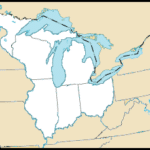The First Great Awakening was a revival that swept Protestantism in the British colonies and changed the fabric of religion in early America. The revival took place in the mid-18th century and was a reaction to the logic and reasoning of the Enlightenment. First Great Awakening APUSH questions will require you to know the leaders of this movement and how the movement affected religion and everyday life in the colonies.
What is the First Great Awakening?
Protestant ministers in the 1730s began to push back against the cerebral nature of religion, which dictated what faith looked like in the colonies. Tradition, hierarchy, and careful study of doctrine marked the quiet, modest practices of colonial Protestants, but fiery ministers like Jonathan Edwards and George Whitefield began to preach a more personal, emotional religion. They held open-air sermons across the colonies, attracting thousands of believers with their intensely spirited words and ideas.
The result was the First Great Awakening, an era of great change for religion in America. Christian Protestants began to reflect on the spirituality of everyday life and contemplated a deep, direct connection to their God, where previously the connection was seen to be between the church leaders and the deity. Because of its deeply personal nature, and an influx of new ideas about faith, the First Great Awakening sparked many rifts between religious groups, and thus this was a period when many new denominations were born among Methodists, Baptists, and Presbyterians. Some categorized the division between “old lights” and “new lights,” with the old lights being those adherents to the more traditional, unemotional faith, and the new lights being the subscribers to the new passionate and personal religiosity.
Important years to note for the First Great Awakening:
- 1740: George Whitefield travels to America
- 1741: Jonathan Edwards delivers his famous sermon, “Sinners in the Hands of an Angry God” in Enfield, Connecticut
Why is the First Great Awakening so important?
The First Great Awakening had a lasting effect on both the religious and political fabric of America. Great schisms appeared in the churches between the old lights who thought that salvation was predestined, and the new lights who thought a person could be saved through conversion. Because the establishment churches rejected these new ideas, revival preachers began to move outside of the church (physically and bureaucratically) and form congregations without going through the proper channels of ordainment. Additionally, the deeply personal views of the revival, and its messages of equality, contributed to a more populist, democratic viewpoint among the colonists, which helped shape the country’s mentality leading up to the Revolution.
What are some historical people and events related to the First Great Awakening?
- George Whitefield: An English Anglican minister who toured the colonies, helping to spread the spiritual revival
- Jonathan Edwards: An American preacher who is credited with sparking the revival at his Massachusetts church in the 1730s
- Samuel Davies: A Virginia Presbyterian evangelist who converted slaves and promoted their education so that they could read the Bible
What example question about the First Great Awakening might come up on the APUSH exam?

Portable field pulpit c. 1742-1770 (Source)
One reason George Whitefield and other revivalist preachers of the Great Awakening used pulpits like the one seen in the picture was because
A) they believed that preaching among nature brought them closer to God.
B) their controversial message meant they were not welcome in many churches.
C) they wanted a way to symbolically disassociate with the traditional church.
D) their ardent followers threatened to damage church property in protest.
Answer:
The correct answer is (B). The sermons of revivalist preachers proposed new thoughts on church doctrine, and were rife with messages of personal connections to God and a religious revolution for the common man. As such, many of the established churches of the colonies were not welcoming to the revivalists, forcing these preachers to take their messages outside. This only helped the spread of the movement, as these touring ministers could draw crowds numbering in the thousands to their open-air sermons.





